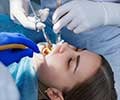- History of anaesthesia - (https://asa.org.au/history-of-anaesthesia/)
- Nitrous oxide: are you having a laugh? - (https://edu.rsc.org/feature/nitrous-oxide-are-you-having-a-laugh/2020202.article)
- John Snow, MD: anaesthetist to the Queen of England and pioneer epidemiologist - (https://www.ncbi.nlm.nih.gov/pmc/articles/PMC1325279/)
- Types of Anesthesia - (https://www.uclahealth.org/medical-services/anesthesiology/types-anesthesia)
- Curare - A Curative Poison: A Scientometric Analysis - (https://www.ncbi.nlm.nih.gov/pmc/articles/PMC4237325/)
About
"Doctor, will you give me Chloroform or Anesthesia?"
This is the often-repeated query by many patients about to undergo an operation. Little do they know that chloroform became obsolete decades ago. Anesthesia has come a long way since then, being much safer today than it was a few decades ago. General anesthesia as it is called today, can be administered with just a small prick of a needle by injecting the anesthetic drug into the person's vein of the hand, while he falls into deep slumber to wake up after the surgery.
What would it be like to undergo an operation without anesthesia? A torture of the worst kind. And that is how our ancestors felt when they had to undergo an operation. No wonder then, without the benefit of anesthesia to make them oblivious to the pain of surgery, they depended on magic, rituals and incantations to cure their pain. Advancements in anesthesia techniques helped the development of surgery too and have taken it to new heights in last thirty years.
Pain Relieving Drugs: It would be difficult to talk about the origin of anesthesia without taking note of the first pain relieving drugs. The ancient Egyptians used poppy seeds (from which opium is derived) during the operations. The Romans used the extract of the Mandragora plant to alleviate pain, the Greek used herbs like hemp and the Chinese used cannabis. Some of these were used for surgery, but anesthesia as it exists today as sophisticated drug delivery systems and machines was unknown.
Between 2nd and 5th century, people used mandragora mixed with wine and opium for surgery. Sometimes physical methods like compression of blood vessels or the nerves by means of clamps applied over the limbs were used to numb the area.
Refrigeration anesthesia: meant using cold water or snow to numb the region so that surgeries like amputations or abscesses drainage could be done.
Blood letting, hypnosis, even the barbaric custom of giving a forceful knock on the patient's head, to give rise to a concussion and render the patient unconscious were used as a means of anaesthetizing someone(1✔ ✔Trusted Source
History of anaesthesia
Go to source).








